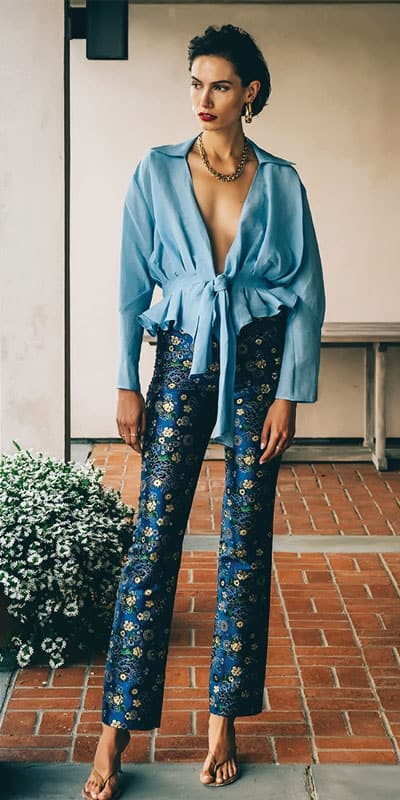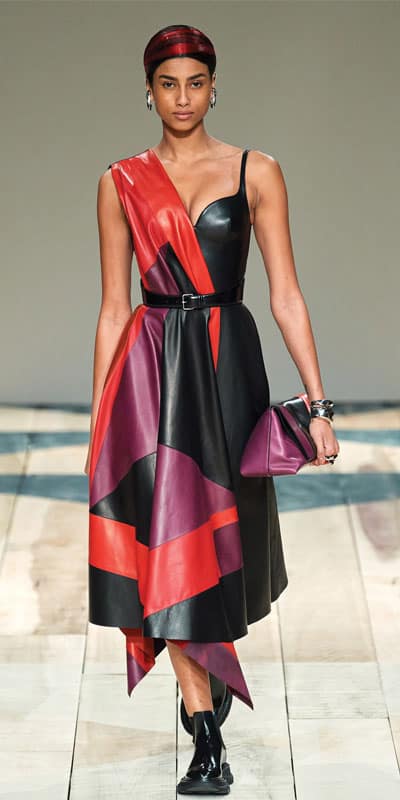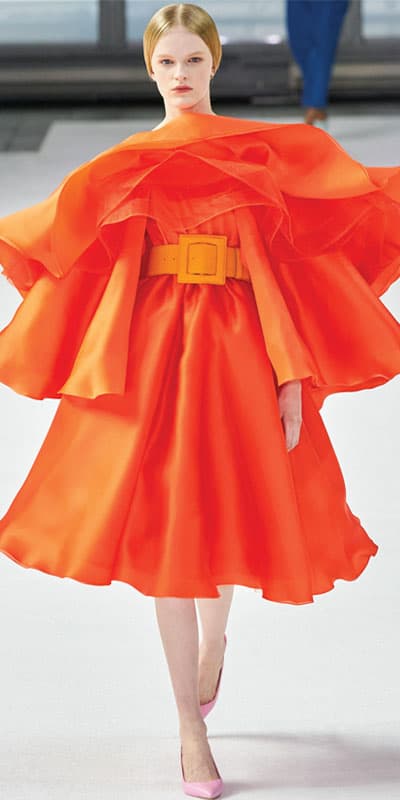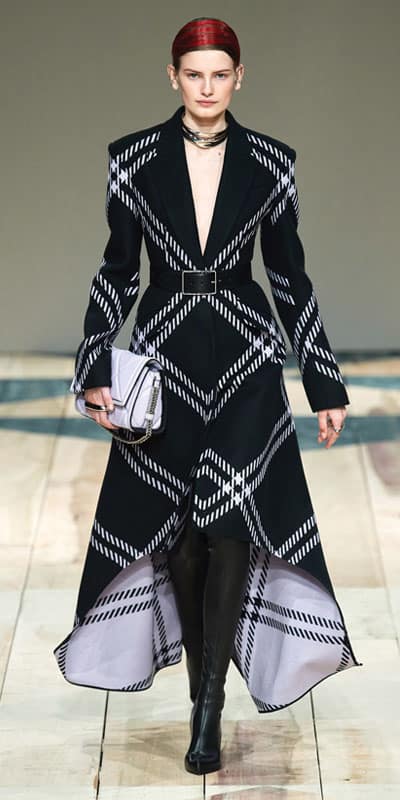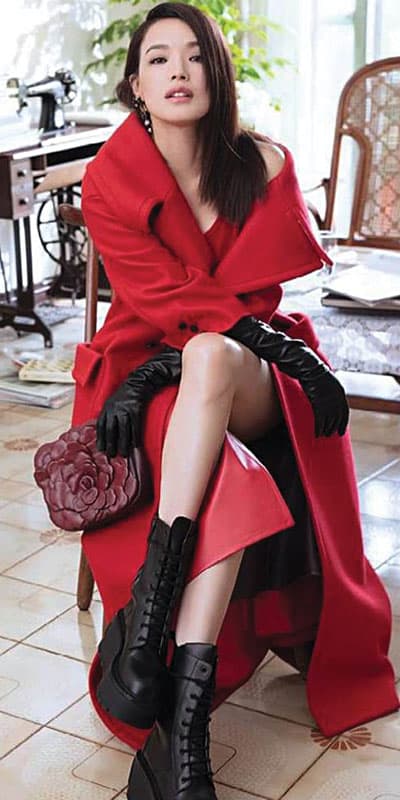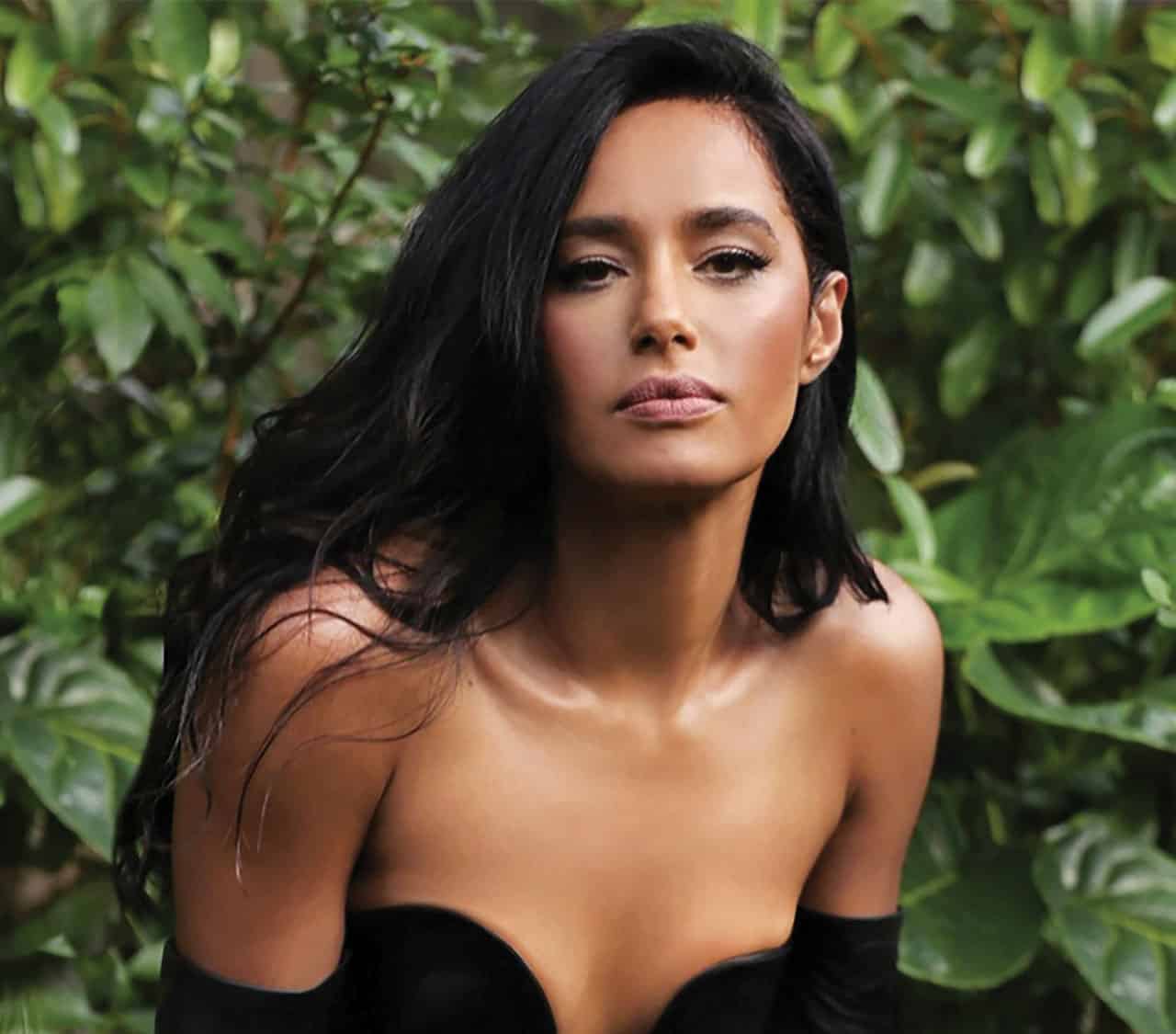
The deadline reminder for this article stirred me from my summer slumber with a sudden jolt. The words ‘October-November issue’ stared at me from the screen baffling and purely nasty. It must be a mistake, was my first thought; we can’t be so close to the end of the year. I indeed wrote about the spring-summer season a while ago, but it seemed like only yesterday. What did just happen? It felt like someone had pulled my life out from under me, obliterating with no mercy the better part of this year. Getting to work, I flipped through the runway photos showing the Fall-Winter 2020/21 Collections with the weird feeling I was poring over ghosts from another life. The fashion shows that presented those looks to the world in February had unknowingly been the last of their kind. The images in front of me immortalized the last hurrah of an industry that had historically sworn by glamour, lavish exposure, discretionary decision-making, luxurious consumerism, deep interconnections, over-scheduled seasonality, and unforgiving pace. A shiver went down my spine. They were photos of before.
On high alert by the time the coronavirus pandemic spurred the biggest economic contraction since World War II, speeding changes that had been already dramatically happening in every sector, fashion – one of the biggest industries in the world – is forecast to contract by a third in 2020, and is now officially on red alert, which is elegant for ‘in a shambles’. Faced with the dire consequences of an unprecedented humanitarian and financial crisis that hit both the supply and demand, fashion is just at the beginning of its struggle. Temporary or indefinite hiring freezes, store closures, job losses, order cancellations, decreased demand across channels, and the continued spending hiatus have generated a domino effect that led to a disturbingly unfamiliar landscape and a raw lie of the land.
But fashion is, at the same time, just at the beginning of its reinvention. Some of the changes we see were imminent before the pandemic – a growing antipathy toward unsustainable business models, the decline of the wholesale, a start on the seasonless design, an accelerated presence of the digital, as well as a newly-minted opening toward collaboration within the industry, where even ferociously competing stakeholders felt the need to share the burden.
So fashion is changing. It has to. There has to be a reset and reshape, a re-evaluation not only of the industry’s value chain but also of the values by which its people measure their actions. The fashion world has to rethink everything from how to be more creative and sustainable to how to preserve integrity, substance, and a progressive vision. In a rare joint statement issued by the British Fashion Council and the Council of Fashion Designers of America in May, brands, designers, and retailers were encouraged “to slow down and focus on no more than two main collections a year.” It was a first official admission of the “clear disconnect from when things arrive in-store to when the customer actually needs them” and of the out-of-control delivery cadence, reliance on markdowns, abundance of shows off the seasonal calendars and outside of core major fashion weeks, environmental impact, uncalled-for speed, and chronic stress.
There is only one way to look at the world and see the image of after. It shows the life-changing power of defining humanity, at last, for oneself.
When the pandemic hit like a giant ball of fire, global fashion was already facing a crisis of its own. As a global industry with the engines running at full power for as long as we can remember, fashion lost sight of its most important raison d’être – the emotional connection with the customer, which defines the essence of customer experience. Increasingly out-of-sync with weather patterns, with the joy of creativity, pride in the quality, the so-human need for optimism, fashion lost its flexibility and earnest curiosity, forgot to be kind and compassionate and stopped listening altogether to the conversations taking place worldwide. It’s over, it kept telling us loud and clear, everyone please go home.
Therefore, the new challenge posed to the fashion world by the pandemic was not so much to survive and carry on as it was, but to go through this experience with humbleness, and emerge on the other side of it better. Whatever the fashion industry lost in the fire, and it did – a lot, once the dust settles we expect to witness the revival of a more sensible fashion, more efficient, more educated, and much better connected with its customers. That is, with us.
For we’ve been going through the same ravaging fire and still are, every day, under the same enormous strain of not knowing our way out yet. The crisis is a catalyst that shocked into change not only industries, businesses, and environments but also lives and livelihoods. Busy with physical survival in a world fraught with political, economic, and social unrest, we prioritize the quantifiable and the immediate and forget the ineffable even though we’re well aware that it makes the very fabric of our lives. Paying attention to seasonal fashion styles may seem off the point right now. But before we rush to dismiss it as shallow, it’s worth confronting the elephant in the room – is fashion still relevant or even realistic in the post-pandemic world? Do the fall-winter trends set before the crisis, in live fashion shows staged for cheerfully mingling audiences oblivious to what would become the immutable rule of social distancing or the new normal, still represent us and the times we are living through? Do they have any sense of realness to them at all?
Because, let’s face it, at some point in the coming months we are all going to wake up and walk out from the lockdowns and relaxation rollbacks into the post-COVID world as normal people, ready for a fresh start. We’ll sort out what we lost and what we saved in the fire, and decide how we want to move on. We’ll come to terms with the fact that while nothing is as it used to be, some things we came to value like never before – love, friendship, family, the human touch, the beauty we find in life, our emotions, our joie de vivre, the eyes through which we see the world, and all the things that make each of us unique. After months of isolation and boredom with nothing but a Zoom screen to dress for, we’ll finally have to pick what to wear to best illustrate our new narrative; what to wear to celebrate a rediscovered world of humanity, fragility, intimacy, beauty, and forgiveness.
From all the Fall 2020 designers’ collections photographed during the lockdown, the #ValentinoEmpathy Campaign stands apart by putting at its core precisely “the one emotion that shines through the brightest in this age of social distancing”. Valentino’s Pierpaolo Piccioli promoted equality using the humanity of individuals to depict their feelings and emotions, despite age, gender, race, and disposition. Fashion’s biggest names starred in this campaign – willing to illustrate how what makes us different from one another is what brings humanity together as one, and they have also donated their fees to the fight against COVID-19. Valentino brand donated what it would’ve spent on the shoot – one million euros – to Rome’s Lazzaro Spallanzani Hospital.
To answer the obvious question: what are the main fashion trends for the upcoming cold season, I have to say that common sense is the rule of thumb. Good clothes do not have to be fashionable, in the sense of being the latest thing. They have, however, to be timeless. Creativity and lasting quality are paramount. The rest is imagination and reinvention of what we turn to for comfort, safety, and a sense of belonging.
For the Fall-Winter 2020/21, we get to pick up the perfect dose of Romantic, Playful, and Strong. Nothing is new in the sense of unheard of. We know what Romantic means – ruffles, fringes, capes, velvet, silver shimmering, Bohemian-chic. We understand the escapism offered by Playful styles through fantasy dresses, lingerie-on-the-outside sexiness, statement collars and sleeves, or sweet memories of childhood’s dolls. And we’ve experienced many times before the empowerment provided by a broad shoulder-line, the sense of protection offered by leather cladding, the dignity put into effect by beautiful long coats, and the seduction of the Dominatrix, Matrix or Biker bravura. Strong will never go out of fashion. Nor will it cease to stand for our prevailing sense of humor, audacity, and avant-gardism.
Nevertheless, it’s not over yet. We are still on the brink of collapse. We lost irreplaceable things in this crisis and this loss changed us forever. We barely fathom how the other side of it looks, and we aren’t sure whether we are alone in this or we are all one. We’ve understood by now that we cannot continue to hear without listening, watch without seeing, speak without meaning, or touch without feeling. Not sure what’s worth saving, some of us may just fold and quit, admitting defeat. Some may continue the unrest – unsure what they fight for and why. Some may continue to believe that two wrongs make a right. Some may take the risk to save the healing recipe of forgiveness. Nothing more than fleeting glimpses of things in between.
There is only one way to look at the world and see the image of after. It shows the life-changing power of defining humanity, at last, for oneself.
Some of us will find this way.

